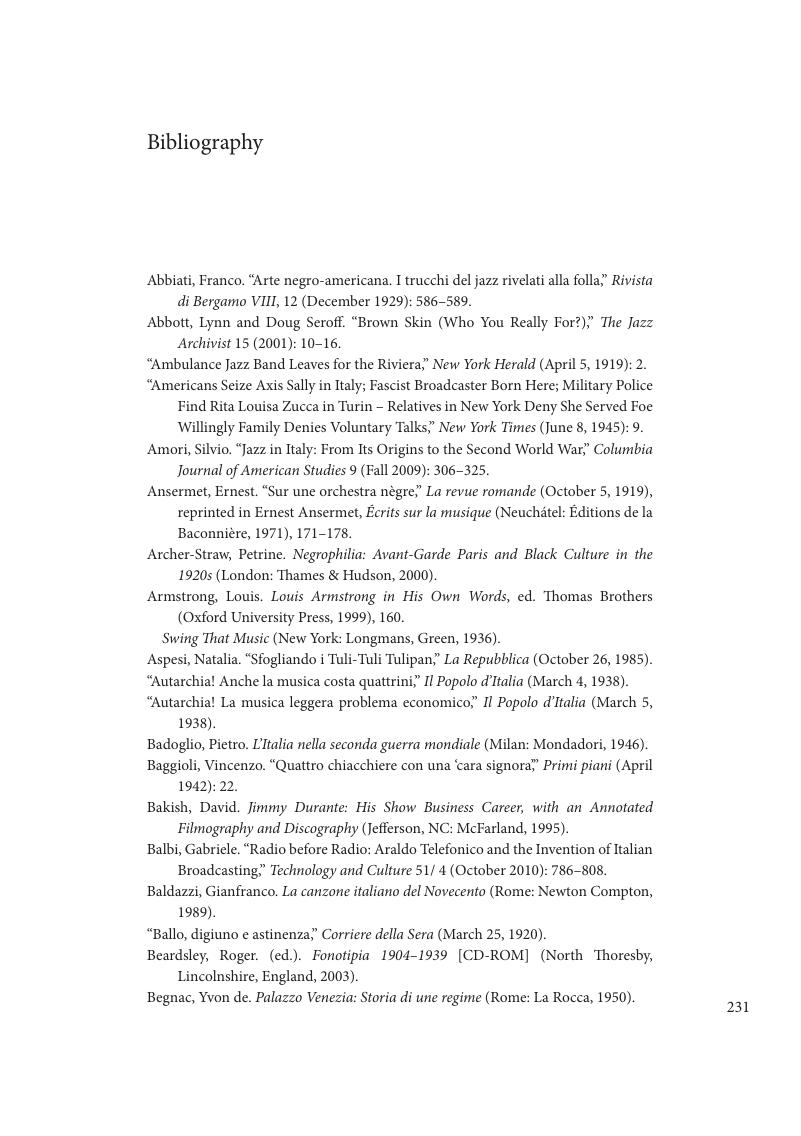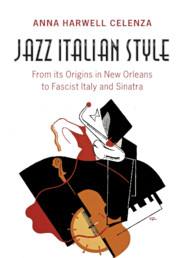Bibliography
Published online by Cambridge University Press: 23 March 2017
Summary

- Type
- Chapter
- Information
- Jazz Italian StyleFrom its Origins in New Orleans to Fascist Italy and Sinatra, pp. 231 - 243Publisher: Cambridge University PressPrint publication year: 2017
References
Bibliography
The Encyclopedic Discography of Victor Recordings. http://victor.library.ucsb.edu.
Radiocorriere TV RAI 1925–1995. www.radiocorriere.teche.rai.it
Ricordando Alberto Rabagliati. www.albertorabagliati.com
Ricordando il Trio Lescano. www.trio-lescano.it
Tulane University Hogan Jazz Archive. https://jazz.tulane.edu
University of Colorado Digital Sheet Music Collection. http://libcudl.colorado.edu/sheetmusic
The Wolfsonian-Florida International Library. www.wolfsonian.org



